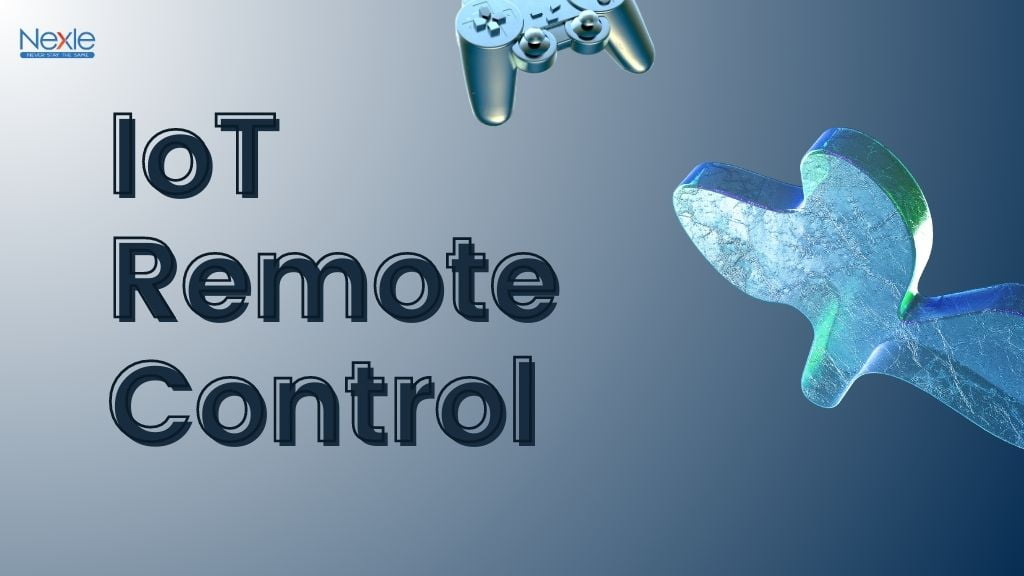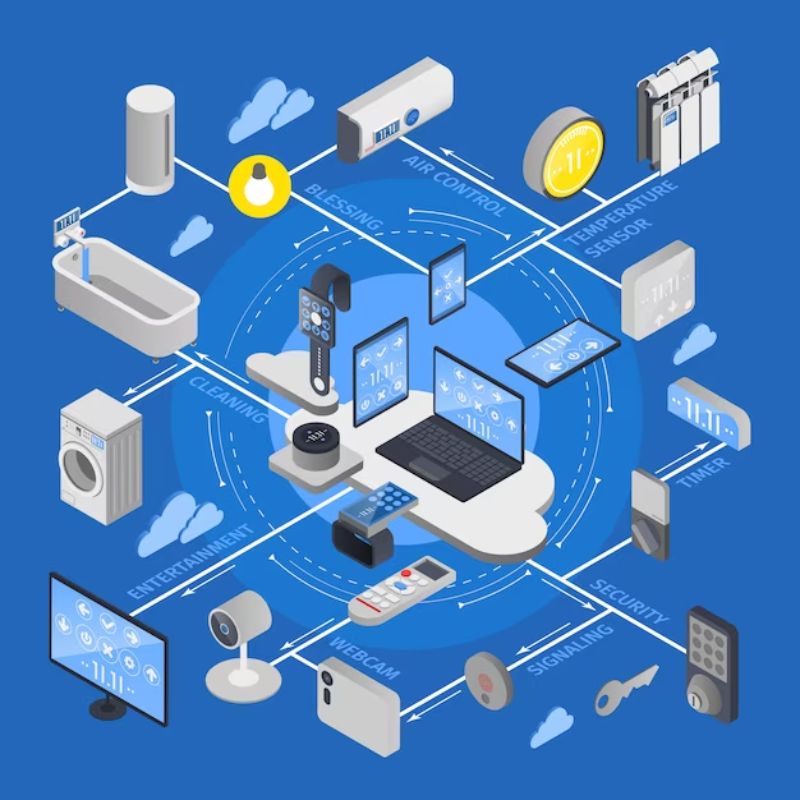So listen up, folks, because we're diving deep into something that's not just a buzzword but a game-changer in the tech world. IoT remote updates have become the backbone of modern connected systems, and they're transforming how devices communicate and evolve over time. Imagine a world where your smart fridge, security cameras, and even your car can update themselves without you lifting a finger. Yeah, that's where we're headed, and it's pretty damn exciting. Let's break it down, shall we?
Now, you might be wondering, "What exactly are IoT remote updates?" It's not rocket science, but it's pretty close. In simple terms, it's the process of pushing software updates to Internet of Things (IoT) devices remotely, ensuring they stay up-to-date and secure. This isn't just about convenience; it's about maintaining functionality, improving performance, and safeguarding your devices from potential threats.
Here's the kicker: as more and more devices get connected to the internet, the need for seamless updates becomes crucial. Without proper updates, these devices can become obsolete or even vulnerable to cyberattacks. And who wants that? So, buckle up because we're about to explore why IoT remote updates are not just important but essential in today's hyper-connected world.
Read also:Aagmal The Ultimate Guide To Understanding And Mastering This Revolutionary Concept
Understanding IoT Remote Updates: The Basics
Alright, let's get down to brass tacks. IoT remote updates are essentially the mechanism that allows devices connected to the internet to receive software updates without requiring physical intervention. Think of it like a magic wand that keeps your gadgets running smoothly and securely. These updates can include bug fixes, security patches, new features, and performance improvements. It's like giving your devices a digital makeover, and it's all done behind the scenes.
Here's how it works: manufacturers or service providers send updates through a secure connection to the devices. These updates are then installed automatically, ensuring that the device continues to function optimally. This process is critical because, without it, devices can become outdated, leading to poor performance or, worse, security vulnerabilities. It's like leaving the door unlocked to your house—just waiting for trouble to walk right in.
Why Are IoT Remote Updates Important?
Let's talk turkey here. IoT remote updates are more than just a nice-to-have feature; they're a necessity. With billions of devices connected to the internet, keeping them updated manually would be a logistical nightmare. Not only does it save time and effort, but it also ensures that devices remain secure and efficient. Here's a quick rundown of why these updates matter:
- Security: Regular updates patch vulnerabilities, reducing the risk of cyberattacks.
- Performance: Updates often include optimizations that make devices faster and more reliable.
- Compatibility: Ensures devices work seamlessly with other systems and software.
- Innovation: New features and functionalities can be added post-launch, extending the device's lifespan.
It's like giving your devices a regular tune-up, but instead of taking them to the shop, they do it themselves. Pretty slick, right?
The Role of IoT Remote Updates in Modern Technology
IoT remote updates have become the backbone of modern technology, driving innovation and efficiency across industries. From smart homes to industrial automation, these updates ensure that devices remain relevant and functional in an ever-evolving digital landscape. Let's take a closer look at how they're making waves in various sectors.
In the realm of smart homes, for instance, remote updates keep your smart thermostats, lighting systems, and security cameras up-to-date, ensuring they work seamlessly together. In healthcare, medical devices can receive critical updates that improve patient care and safety. Meanwhile, in the automotive industry, over-the-air updates allow manufacturers to fix issues and add new features to vehicles without recalling them. It's like magic, but with science.
Read also:Wasmo Somali Telegram 2023 The Ultimate Guide For Understanding The Trend
Key Benefits of IoT Remote Updates
Now, let's break down the benefits of IoT remote updates in a way that even your grandma could understand. Here's what you get:
- Cost Efficiency: Reduces the need for manual updates, saving time and resources.
- Scalability: Allows for updates to be deployed across thousands or even millions of devices simultaneously.
- User Experience: Ensures devices remain user-friendly and up-to-date with the latest features.
- Reliability: Minimizes downtime and ensures devices function as intended.
It's like having a personal tech support team working around the clock to keep your devices in tip-top shape. Who wouldn't want that?
Challenges in Implementing IoT Remote Updates
Of course, nothing's perfect, and IoT remote updates come with their own set of challenges. One of the biggest hurdles is ensuring that updates are delivered securely. With so many devices connected to the internet, the risk of cyberattacks is always present. Manufacturers need to implement robust security measures to protect against unauthorized access and data breaches.
Another challenge is compatibility. Not all devices are created equal, and updates need to be tailored to work across different hardware and software configurations. This requires meticulous planning and testing to ensure that updates don't cause more problems than they solve. It's like trying to fit a square peg into a round hole—sometimes it just doesn't work.
Overcoming Security Concerns
So, how do we tackle these security concerns? It starts with encryption. By encrypting updates during transmission, manufacturers can ensure that only authorized devices can access and install them. Additionally, implementing digital signatures can verify the authenticity of updates, preventing malicious actors from injecting harmful code.
Regular security audits and vulnerability assessments are also crucial. These practices help identify potential weaknesses before they can be exploited. It's like having a security guard on duty 24/7, keeping an eye out for any suspicious activity. With the right measures in place, IoT remote updates can be both secure and effective.
Best Practices for IoT Remote Updates
Alright, let's talk about best practices. If you're a manufacturer or developer looking to implement IoT remote updates, here's what you need to know:
- Plan Ahead: Develop a comprehensive update strategy that considers all possible scenarios.
- Test Thoroughly: Ensure updates are thoroughly tested before deployment to avoid any hiccups.
- Communicate Clearly: Keep users informed about updates, including what's being changed and why.
- Monitor Performance: Continuously monitor devices after updates to ensure everything's working as expected.
By following these best practices, you can ensure that your IoT remote updates are not only effective but also user-friendly. It's all about striking the right balance between functionality and usability.
Case Studies: Real-World Applications
Let's take a look at some real-world examples of IoT remote updates in action. Tesla, for instance, has revolutionized the automotive industry with its over-the-air updates. These updates allow Tesla vehicles to receive new features and improvements without ever visiting a service center. It's like getting a brand-new car every time you turn it on.
In the healthcare sector, companies like Medtronic use remote updates to enhance the functionality of their medical devices. These updates ensure that devices remain up-to-date with the latest medical protocols and standards, improving patient outcomes. It's a win-win for everyone involved.
Future Trends in IoT Remote Updates
So, what's on the horizon for IoT remote updates? The future looks bright, with advancements in AI and machine learning set to transform the way updates are delivered and implemented. Imagine updates that are not only automated but also personalized to individual devices based on their usage patterns. It's like having a personal assistant that knows exactly what your device needs before you even realize it.
Additionally, the rise of 5G networks will enable faster and more reliable updates, reducing downtime and improving overall performance. This will be particularly beneficial for industries that rely heavily on real-time data, such as transportation and logistics. The possibilities are endless, and the future of IoT remote updates is looking pretty damn exciting.
Predictions for the Next Decade
Here's what we can expect in the next decade:
- AI-Driven Updates: Updates tailored to individual device needs using AI and machine learning.
- Quantum Security: Advances in quantum computing will lead to more secure update mechanisms.
- Edge Computing: Updates processed at the edge of the network for faster and more efficient deployment.
It's like stepping into a sci-fi movie, but with real-world applications that will change the way we live and work.
Conclusion: Why IoT Remote Updates Matter
Let's wrap this up, folks. IoT remote updates are not just a trend; they're a necessity in today's connected world. From enhancing security to improving performance, these updates play a crucial role in keeping devices up-to-date and functional. As technology continues to evolve, so too will the methods and mechanisms for delivering updates.
So, what can you do? If you're a consumer, make sure your devices are set to receive automatic updates whenever possible. If you're a developer or manufacturer, implement best practices to ensure your updates are secure, efficient, and user-friendly. Together, we can create a safer, more connected world. And isn't that what it's all about?
Now, it's your turn. Got any thoughts or questions about IoT remote updates? Drop a comment below or share this article with your friends. Let's keep the conversation going because, hey, who knows what the future holds? One thing's for sure—it's going to be awesome.
Table of Contents
Understanding IoT Remote Updates: The Basics
Why Are IoT Remote Updates Important?
The Role of IoT Remote Updates in Modern Technology
Key Benefits of IoT Remote Updates
Challenges in Implementing IoT Remote Updates
Best Practices for IoT Remote Updates
Case Studies: Real-World Applications
Future Trends in IoT Remote Updates


